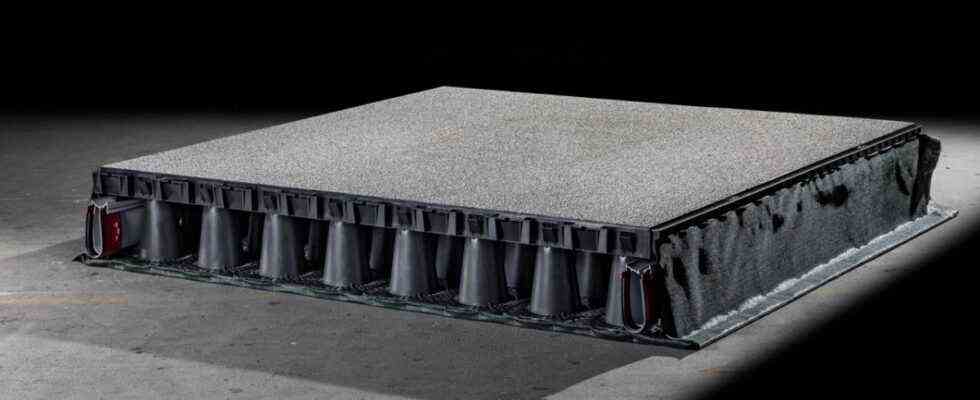Conventional road building is hard work, noisy and dirty. Before the traffic can roll in, the ground has to be prepared with tons of sand, grit, gravel and tar. After all, the new roadway should be able to withstand the stresses and strains of cars and trucks for decades and lose its shape as little as possible. Every cable and pipe must be carefully planned. Every change means massive excavation work and a new construction site.
With prefabricated modules made of recycled plastic, the Dutch start-up “Plasticroad” promises much faster and easier road construction. Like prefabricated parquet, road sections can be put together with the new system. Heavy foundations and laborious excavation work are not necessary. The relatively light elements made of plastic granulate can be laid in a simple bed of sand. In addition, a cavity for all the necessary cables is integrated in the interior of the modules, similar to some of the walls of modern prefabricated house construction.
Product developer Anne Koudstaal from Plasticroad describes the advantages of the concept as the prefabricated structure not only makes the construction but also the maintenance of streets easier, since access to the carriageway becomes easier.
There are also objections to the use of plastic in road construction
The plastic granulate from which the road modules are made consists of recycled plastic. Instead of releasing the environmentally harmful greenhouse gas CO₂ from waste incineration, yoghurt pots, bottle caps or straws are shredded and used as part of a street. If individual modules are exchanged, they can be recycled and processed one hundred percent as raw material into new road elements – without the use of new materials and without causing waste.
Given the global plastic waste problem, the idea of reusing recycled plastic in streets sounds tempting. It’s not entirely new either. The use of plastic in road repairs is being tested in Cumbria in north-west England. In parts of India, this has even been mandatory since 2015. However, the whole street is not built from plastic, recycled plastic only replaces a small part of the bitumen that serves as a binding agent in the asphalt.
However, there are also objections to the use of plastic in road construction. The Federal Environment Agency fears that microscopic pieces of plastic will be distributed in the environment through abrasion from the road and that this could pollute the respective ecosystem in the long term. With the Plasticroad system, abrasion is prevented by a coating that also protects the material from aging processes caused by UV radiation.
First pilot project in the Netherlands: 30 meter long bicycle lanes
And the new modular street can do even more: Thanks to the cavity inside, it also serves as a rainwater reservoir and could thus become a valuable component of sustainable urban infrastructure in view of the increasing heavy rain events in Europe forecast by climate experts. Because the existing sewer systems are not dimensioned for such large amounts of water. The result: floods and stagnant water on the streets. The modules from Plasticroad, on the other hand, catch the water inside and drain it slowly and in a controlled manner to the ground.
The team has been working on the elements of the plastic road for eight years. The first pilot projects were built in the Dutch municipalities of Zwolle and Giethoorn, each in the form of a 30-meter-long cycle path. Each lane contains around a ton of recycled plastic, which corresponds to around 218,000 plastic cups and weighs four times less than that of a conventional road. Since autumn 2018, sensors in both test sections have been providing data on the temperature of the material, the number of bicycles passed or the water level in the lane. The data made it possible to make the road even more robust than the pilots, so that cars can now drive on it, according to Plasticroad.
Industrial production has now started. The first parking spaces and a residential street were realized this year in the municipality of Almere. Ultimately, only years of practical tests can show how the product behaves under road conditions with higher loads than with the cycle path pilots.

